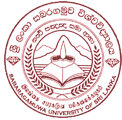Who is the father of animal biotechnology? Károly Ereky Károly Ereky Born 20 October 1878 Esztergom, Profession: Agricultural engineer
Animal biotechnology is defined as the application of biotechnology to the processing or production of materials by animals (or aquatic species) to provide goods and services. Scientists are using biotechnology to address some of the major global problems of modern times including the food crisis, health, and disease, and conservation, through advances in the following areas: • Agriculture Food production Animal breeding Animal health and nutrition • Medicine Transplant organs Pharmaceuticals Research into human disease • Industrial applications • Conservation and ecology • Animal forensics Various technologies are employed in each of these areas and recent progress in such technologies have facilitated much development in animal biotechnology. These include sequencing and analysis of animal genomes, identification of genes and their variations and an understanding of how these genes are regulated, advances in molecular markers and diagnostics. Recombinant DNA technology has produced transgenic animals (i.e. animals that contain foreign genes for a specific purpose). The first transgenic animal produced in 1982 was a mouse. Most transgenic animals that have been produced since are mice, used in medical research. As technology has developed, other transgenic animals have been produced for economic purposes. Cloning technologies have been developed to produce offspring genetically identical to the parent.
- Teacher: Prof. Sumith Magamage
- Teacher: JLCS Perera
- Teacher: Professor T. Sanjeewa Prasad Jayaweera
- Teacher: JLCS Perera
- Teacher: Prof. Darshanee Ruwandeepika
- Teacher: G Weerakkody
- Teacher: Dr. Dimuthu Wickramanayake
- Teacher: Dr. Jagath Munasinghe
- Teacher: Mr M Naveenan
- Teacher: Prof. Chaminda Walpita
- Teacher: G Weerakkody
- Teacher: Dr. Dimuthu Wickramanayake
- Teacher: Prof. Sumith Magamage
- Teacher: Dr. Jagath Munasinghe
